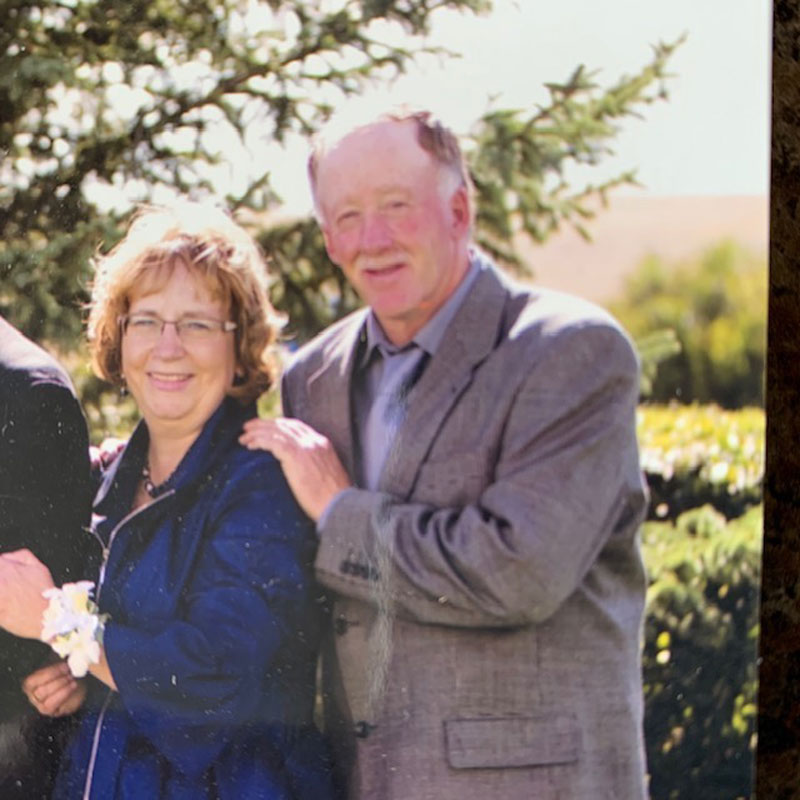Remembering our roots ~ Wade & Lorilee Dundas
By null
By John Godsman Times Contributor
 Wade’s father’s family originated in North Dakota in the late 1800s. His grandfather James Dundas came to Alberta in the early 1900s and worked for the CPR as a land salesman. In March 1911, he purchased 306 acres, costing $18 per acre in the Duck Lake area.
Wade’s father’s family originated in North Dakota in the late 1800s. His grandfather James Dundas came to Alberta in the early 1900s and worked for the CPR as a land salesman. In March 1911, he purchased 306 acres, costing $18 per acre in the Duck Lake area.
Wade’s grandmother Bertha Lien was born in Sedgewick, Alta. James met Bertha while working in the area, and they were married in 1913, moving to the Duck Lake area. They had five children, of which Wade’s father Sivert (Sid) was the fourth. In the 1930s, James sold the farm at Duck Lake and moved to 1.5 miles east of Hussar. Here, he worked for Midland Pacific Elevator company for six years, until an illness took his life in 1936. Sid married Lillian Sandum, from Hussar and they had six children, including twins Wade and Wayne, born in 1953 in Calgary and raised in Hussar.
Wade’s maternal grandfather, Barney Sandum, moved from Norway to North Dakota in 1910, then to Sunnynook in 1917, where he became a stagecoach driver for Deadwood Stage Coach, driving from Faver to Richdale, in North Dakota. In 1923, he moved to Gem, Alta. where he purchased land from the CPR, later selling it. In 1925, he married Sigrid Holm (also from Norway) and they had 11 children. Wade’s mother Lil and her siblings were raised on the family farm at Duck Lake which Barney had purchased in 1929. This farm is now owned by Alvin and Kim Sandum.
Lorilee’s family originates from Buckie, Scotland, where her paternal grandfather, John A. Grant, was born in 1874. His wife-to-be, Frances Vinicombe, was born in 1876 in Portsmouth, England. She was a nurse at a hospital on the Isle of Wight, where she met John who was a soldier in the British Army. He had been injured while fighting in the Boer War in South Africa and was sent to this hospital to recover. They were married in 1900 and had two children while living at Buckie for a number of years, before emigrating to St. Marys, Ont. in 1911. They then moved to Strathmore where John became a ditch rider for the CPR in 1912, in the Craigantler district. He eventually purchased some land between Gleichen and Standard to raise the rest of their family, including another five children. Arthur, Lorilee’s father, was the youngest. Kim Grant now lives on the family farm.
Lorilee’s maternal grandparents were Alec and Katherine Porteous, who came separately from Scotland and England to Lyleton, Man., where they were married in 1915 and had four children. Lorilee’s mother Dorothy (Dot) was the second eldest. They moved to Gleichen in 1923, where Alec became a ditch rider for the CPR, in the Crowfoot district. Initially, they lived at the English Colony before moving to the Berta Vale district in 1930 and farmed for the next 33 years.
Lorilee was born on April 4, 1956 in Calgary and has two sisters. Wade and Lorilee met at a dance in Hussar in 1973 and were married in Standard in 1976. Initially, they were to be married in Hussar, but the Lutheran Church was destroyed by a gas explosion earlier in the year. They have three children, all married. In 1973, Wade and Wayne purchased a farm originally owned by Wilber Simmons, where the family has lived and raised cattle for the last 44 years. Their eldest son Wes now lives on their farm.
Their community involvements have been many – Wade inherited driving the school bus from his dad and spent over 30 years driving. He is a member of the Lions Club, director for the ag society, president of the curling club, treasurer of the Old Timers Hockey Team and leader of Hussar 4-H.
Lorilee has served as president and treasurer of the figure skating club, coached pre-beginners skating in Hussar, coached ringette in Rockyford, served as president of early childhood services, director of Bow Valley Propane for 10 years, and was a 4-H beef leader for 20 years. For the past two years, Lorilee has served as patient advisor at Drumheller Cancer Clinic.
Wade and Lorilee are now busy grandparents and have lived in Hussar since 2017. They notice changes in the area, such as small family farms that have been replaced by huge farm conglomerates, and the railroad and elevators have been removed.

